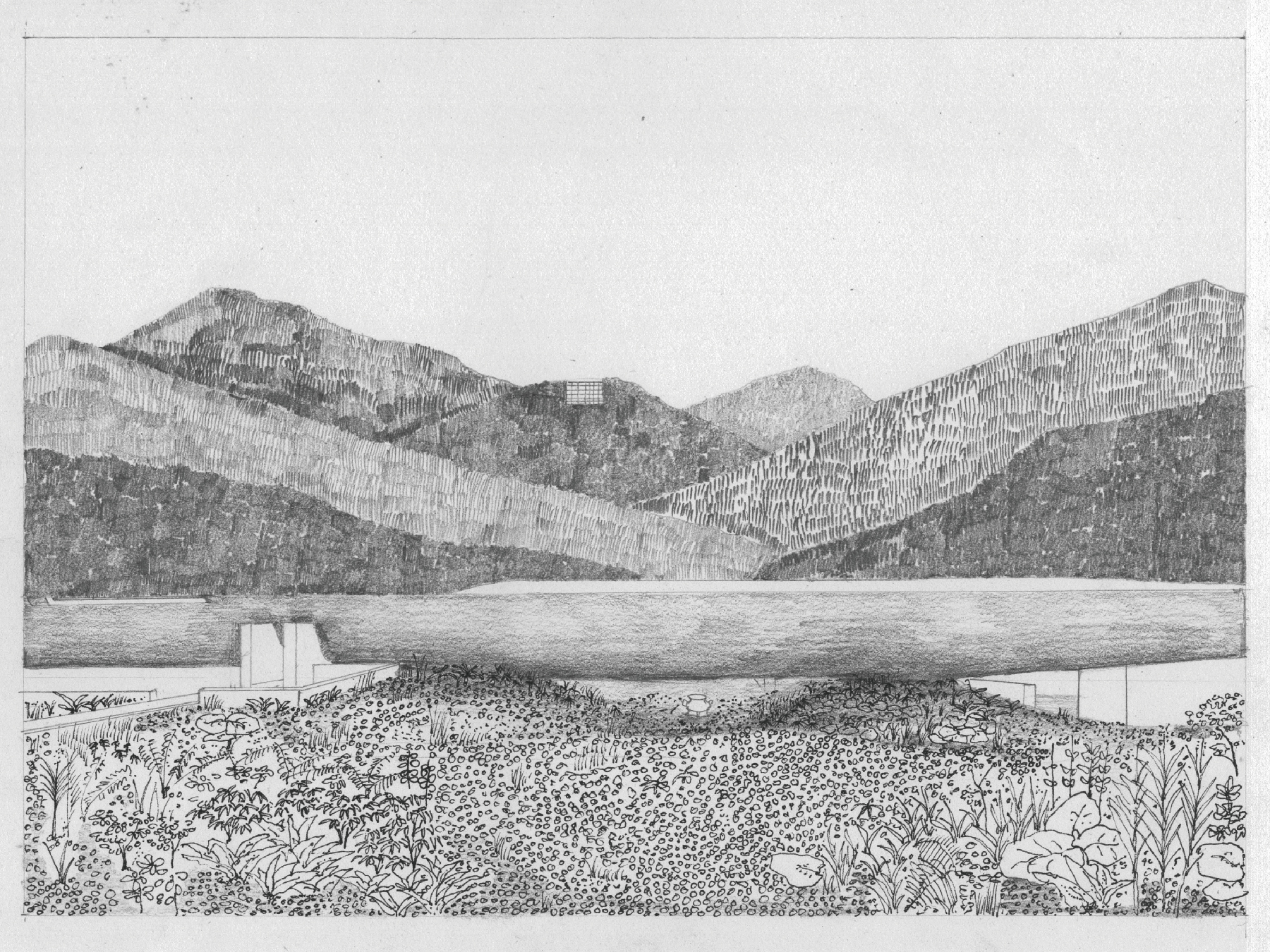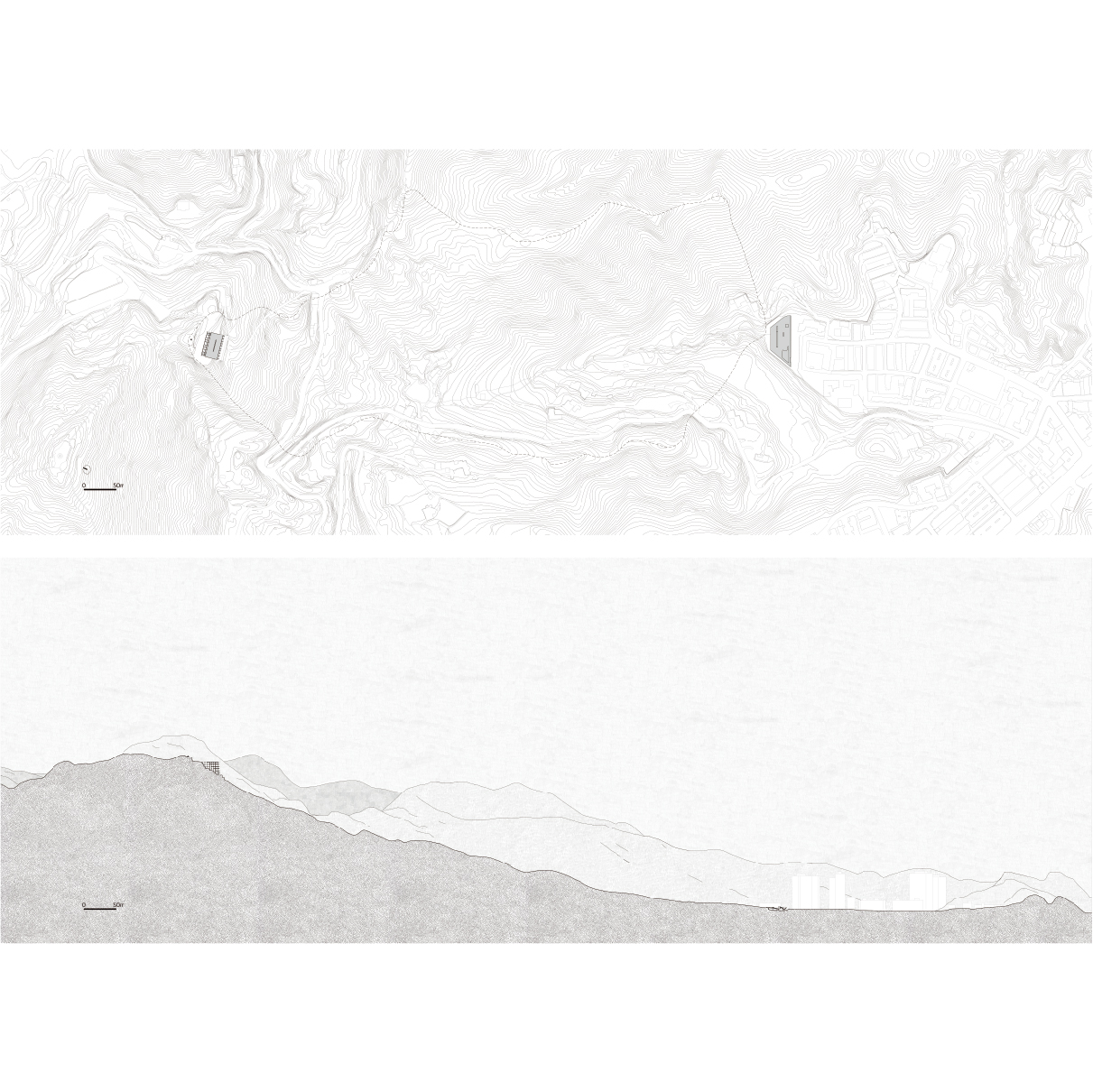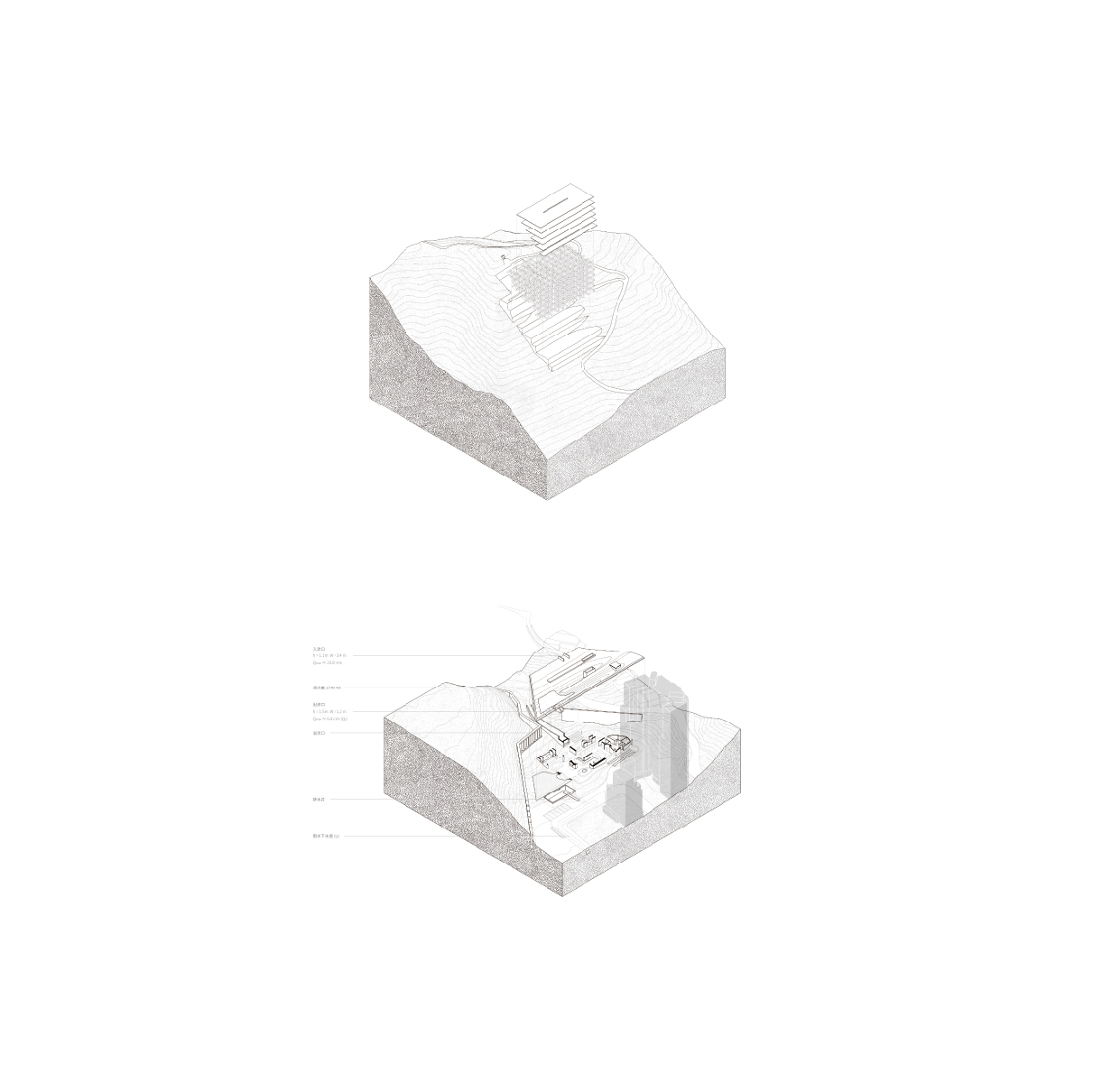民間信仰最初作為一種對自然現象的解釋,其中的神話傳遞了重要的訊息或對 危險的警示。當今日我們改以科學解釋自然,神話最初務實的意義消逝了。連 帶地,對於自然神性的敬畏與尊重也被科學性的量化邏輯取代。
清乾隆年間,台北內湖山區發生的一次土石崩落被視為開漳聖王的顯靈,碧山 巖因此建立。在信仰的初始階段,因為神話,神與自然環境合而為一。然而在 今日科學的角度看來,神話中的顯靈可能只是一次地質事件。同樣作為解釋自 然的方式,神話與科學在當代應是一種並立存在的信仰,我的設計試圖建構一 座立足於這個當代信仰下的廟。一座當代的廟將在科學的邏輯之下透露神話的 氛圍。開漳聖王的信仰暗示先民對抗險惡自然環境的歷史,也標誌著從移民到 定居的過程,這個信仰在當代記載了人的自然觀念。
梳理碧山巖與環境、水文的關係,我將山頭的廟宇搬遷至山腳下住宅區的端 點,山上保留最初的聖石小廟。新廟是城市與自然的過渡,也是自然災害進入 城市前的緩衝。新廟同時作為滯洪設施、鄰里活動空間及登山步道口。新舊廟 坐落集水區的上下兩端,山與水化為廟的一部分。過去神話暗示的危險藉由廟 宇化為具體,延伸入城市生活,在日常與潛在危險的共存之下,找回當代對於 自然的原始敬畏。
Human beings used to interpret natural phenomena through folk beliefs. Myths and taboos served as warnings of danger and may convey significant values. While choosing to believe only in science today, people’s awe for nature have been replaced by the quantitative logic of science.
In the Qing Dynasty, a geological incident happened in the mountains area in Neihu, Taipei was regarded as theophany of Kaizhang Sheng Wang. Bishan Temple was therefore established. The deities people believed in merged with the natural environments through myth. However, looking back at the mythical tale, and based on geological knowledge, we understand that the incident was caused by dip slopes. When it comes to contemporary beliefs, myth and science should be looked upon equally. I tried to construct a temple in this kind of juxtaposition. The belief of Kaizhang Sheng Wang marked the settlers’ fought against the primitive wilderness. It represented the struggle between humans and nature. My work tries to clarify the contradiction between human behavior and the natural environment through the belief.
When considering the facts regarding local topography and hydrology, I intend to
build a new temple at the foot of the mountain. The original temple and the new temple will be located at the upper and lower ends of the catchment area, respectively. The new temple is a transitiona from the city to nature, and it also works as a buffer for potential natural disasters before subsiding on the city.
The establishment of the new temple indicates that the mountains and water have become a part of the temple. The construction will give a concrete image of the dangers implied in past myths and extended into urban life. Under the coexistence of daily life and potential dangers, humans may start to venerate and hold the force within nature in awe.





